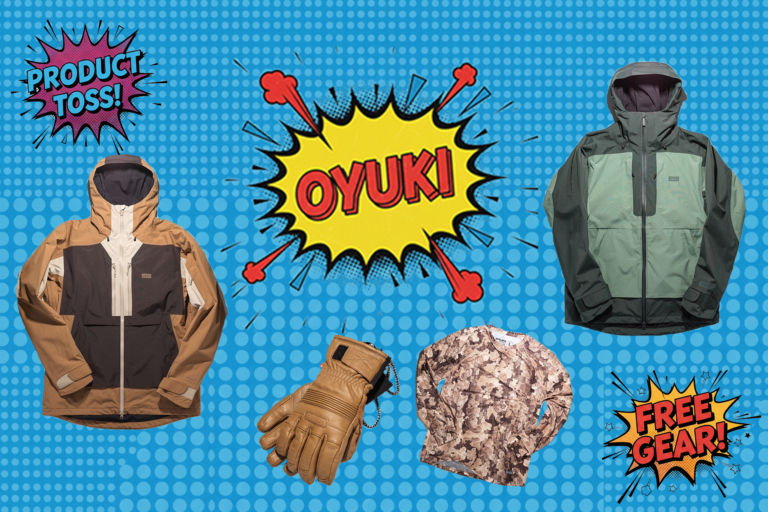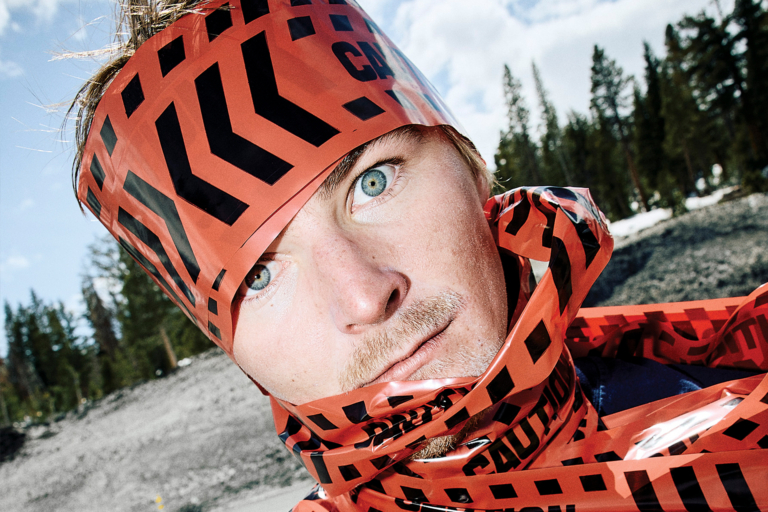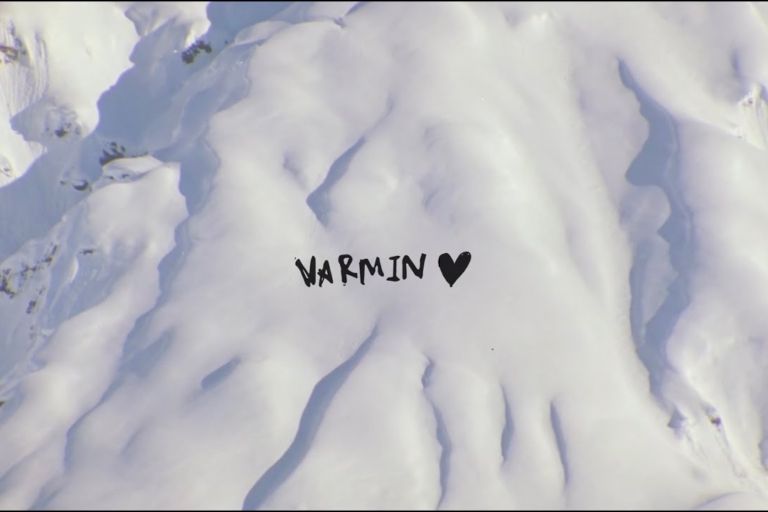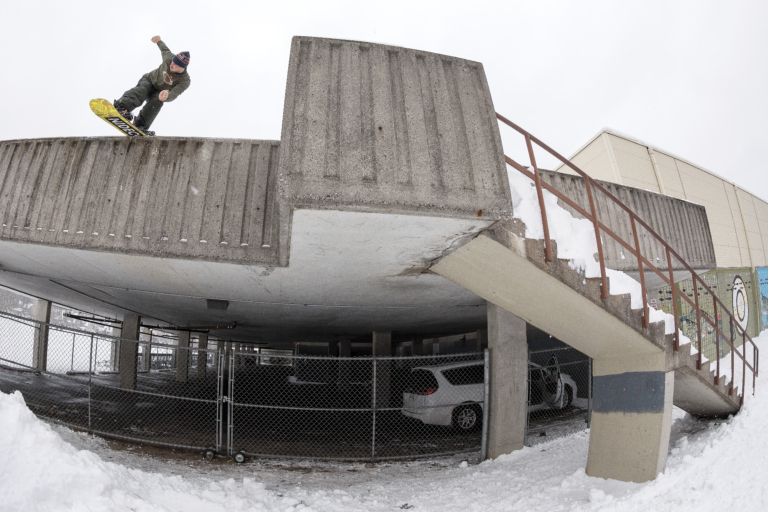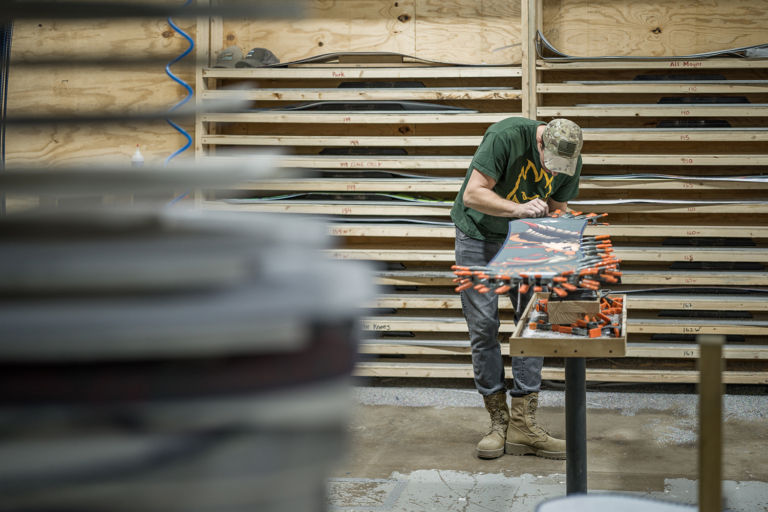It was through snowboarding, particularly spending time in and learning about the backcountry, that Christina Aragon discovered her love of science. Immersing herself in the outdoors of British Columbia, seeing how interconnected everything is, from human to climate to earth systems, the Denver native and Never Summer team rider found her place within the scientific community, and she is now a PhD student studying water resources engineering at the University of Oregon. We’ll let Nina explain exactly what that means, but essentially her work studies snowpack and how its changes literally flow downstream and affect everything from the planet to the economy. This past fall, Protect Our Winters named Nina the Science Alliance Team Captain, a prestigious role with lots of opportunity to affect awareness, understanding, and momentum in the snow community when it comes to climate change. Passion begats passion and for Nina, whose winters are filled with splitboarding missions and as many powder days as possible, the place where science and snowboarding meet is only the start of where she plans to go. — Mary T. Walsh
You spend much of your time snowboarding in the backcountry. How did you get into that aspect of riding?
Now I spend much of my time in the backcountry, but it was definitely an evolution. I spent a lot of years building up snowboard fundamentals before going to the backcountry, and given how dynamic and complex the mountains are, I am glad I did. I was really lucky because I had a lot of support from my husband, Taylor, who always made space for me, taught me new skills, and was there to help me dig out my sled. Although I originally sought out the backcountry in search of new terrain (and of course powder!), I ended up getting way more out of it than I anticipated. Disconnecting from everything else and being surrounded by vast, wild areas fills me with a deep sense of reverence and awe. The backcountry is simultaneously unpredictable and breathtakingly beautiful; it facilitates a unique sense of vulnerability that makes me feel fully present and connected to the land. It is easy to remember to be humble, grateful, and fierce when you find yourself in a sea of mountains.
You have said that it was through snowboarding that you discovered your love of science.
Growing up, I did not have any family or role models in science, so my concept of a science career was the stereotypical white-coat lab technician. This changed for me after taking avalanche courses through the Canadian Avalanche Association. It was the first time I saw myself as someone who could participate in science and potentially turn it into a career, though I still didn’t know this would be the path I would follow. The avalanche training was a first step to spending more time in the backcountry, which is where I started to see the interconnectedness of our human, climate, and earth systems firsthand. One summer we had massive fires in BC that burned some of our favorite places to snowboard. The following winter, this area was clearly very different—the conifer trees no longer had full canopies and all the trees were charcoaled black. Late in the winter, the snow disappeared from this area much quicker than the surrounding, non-burned forests. I realized these patterns could be explained by physical feedbacks with major consequences for downstream water users. Observing and experiencing these changes sparked a curiosity that initiated my career in science.
You are currently a PhD student studying water resources engineering. Can you break down what that means?
My research focuses on snow-derived water resources, so water that was once snow. In mountainous regions, snow can be viewed as a “keystone resource” that unites hydrological, ecological, human, and climate systems. Our snowpacks act as natural reservoirs, storing snow at high elevations in the winter, and then releasing water throughout the summers when human and ecological water demand is the highest. Economically, snow is also a big player, with snow-derived water in the US valued at well over a trillion dollars annually. The work I do combines modeling, remote sensing, and observations to improve our understanding of mountain snowpacks and downstream water resources in the context of climate change.

What does your role as POW Science Alliance Team Captain entail?
POW works with an outstanding team of scientists, including climatologists, hydrologists, glaciologists, historians, and economists—scientists who are on the cutting edge of the work that will be integral for protecting the wild places where we ride, climb, hike, camp. The Science Alliance offers scientific context to the climate-driven changes we all are observing in the mountains and provides guidance to ensure messaging on that is scientifically accurate. As the POW Science Alliance Captain, I am working to develop structures that will facilitate collaboration between the Science Alliance, POW, the Athlete Alliance, and the Creative Alliance. The hope is that we can bring the snowboard community together toward our common goals of slowing climate change and preserving winter snowpacks—both for pow slashes and for vital water resource needs of downstream communities.
What makes you excited to be a part of POW?
I’m a snowboarder. So, it is exciting to be part of an organization founded by a snowboarder where I can use science to help protect a sport that I love. POW is a lever for transformation on climate change, which I view to be one of the most critical issues of our time. Since two of my professional goals are to broaden science communication and to do actionable science, POW is an ideal organization to work for and learn from. POW has the ability to effectively communicate science to the public through their impressive team of influencers. Through this work, POW is paving a pathway that facilitates the translation of science to policy. I am excited to be part of the community that is building solutions to climate change at the institutional- and policy-scale we need.
In a video with POW, you said that being out in nature, whether snowboarding, biking, running, etc, has let you feel like your whole self. Could you elaborate on what you mean?
Yeah, I am from a mixed Caucasian and Latino family, and I have struggled with the feeling of only showing up with half of myself. Growing up in Denver, I most identified with the Latino part of my identity; however, both the outdoors sports and academia are predominantly affluent, white spaces. I felt a strong pressure to show up a certain way, namely with my other half. I was really turned off by the scene surrounding snowboarding when I started because I didn’t feel like I could relate to most of the people I was meeting—none of them came from a similar background or shared my ethnic or cultural identity. I think there has been and continues to be a cultural shift in the sport, but when I was first starting, the snowboard scene made me feel like I needed to be someone else. Despite this internal dissonance that came with snowboard culture, I fell in love with snowboarding itself. This made things more complicated for me because it was not something my family (particularly my parents) could relate to. At home, this turned into conflict surrounding snowboarding because it took away from family time and was taking me towards a path that was not working in the family business. I am super close to my family and so proud of everything my parents have accomplished, so this has always been a huge challenge. I am incredibly grateful for the opportunities that my family gave me, and there is also this tremendous weight of responsibility of needing to perform along traditional ideas of success, particularly when you have been afforded access to opportunities that your parents never had. Ultimately, I am still in the process of trying to merge the various parts of me back together. Snowboarding is one of the places where I can bring all my parts together, just like when I am belly laughing with my family, and I cherish these moments when I feel whole.
What is Community Snow Observations? How can backcountry snowboarders contribute to these efforts?
Community Snow Observations (CSO) uses snow depth observations from backcountry users to improve our estimates of snow distribution in mountainous regions. Mountain snowpacks are fairly unexplored in many parts of the country, so we are trying to get a better understanding of snow depth complexities and variations. Since backcountry snowboarders are often in remote parts of the landscape where we typically do not have monitoring stations, the snow observations they submit help to fill in gaps in our observational network. Our science team incorporates these observations into a computer model in order to improve our estimates of mountain snow. We are about to release a real-time web application that provides these improved snow estimates in numerous regions across the Western US. Ultimately, these observations help us know where there is good snow for riding, help us better predict hazards such as avalanches and flooding and help us to estimate water resources for downstream communities.
Participation is easy and all you need is an avalanche probe and a smartphone. There are three steps:
1. Find an undisturbed patch of snow in the mountains.
2. Measure the snow depth with your avalanche probe.
3. Submit this observation through the Mountain Hub App or through Snow Pilot.
Check out the project details and get involved at communitysnowobs.org, Instagram at @communitysnowobs, or twitter at @communitysnowob!
When you finish your PhD, do you hope to apply your knowledge to the snowboarding/snowsports industry and if so, how? Or do you have plans that extend beyond that?
It has felt like a lot of things I am passionate about have started to come together recently, but the end goal is not entirely clear yet. I intend on spending the rest of my life asking questions and working to solve problems around water resource systems. I hope to be able to structure my scientific work in a way that better serves underserved communities and better includes underrepresented groups in the process. I hope to help be part of the climate solution. I hope to stay healthy and happy and active in snowboarding. I hope I can start a family, work with my sisters and continue to foster community along the way. Ha, so I guess I hope to make a path that doesn’t exist yet.
If readers want to get involved with POW’s efforts, can you recommend how they can start?
Join POW! POW is doing a ton of work right now and you can stay in the loop by signing up for the newsletter or by becoming a POW member—both at the website, protectourwinters.org. More broadly, I would say that it is important to take the time to educate yourself on the science and to understand what is at stake if we don’t act quickly on climate. Taking action on climate can happen in many different ways and times, from voting for climate champions, to advocacy, to having conversations with friends and family. Starting the journey is the important part.

